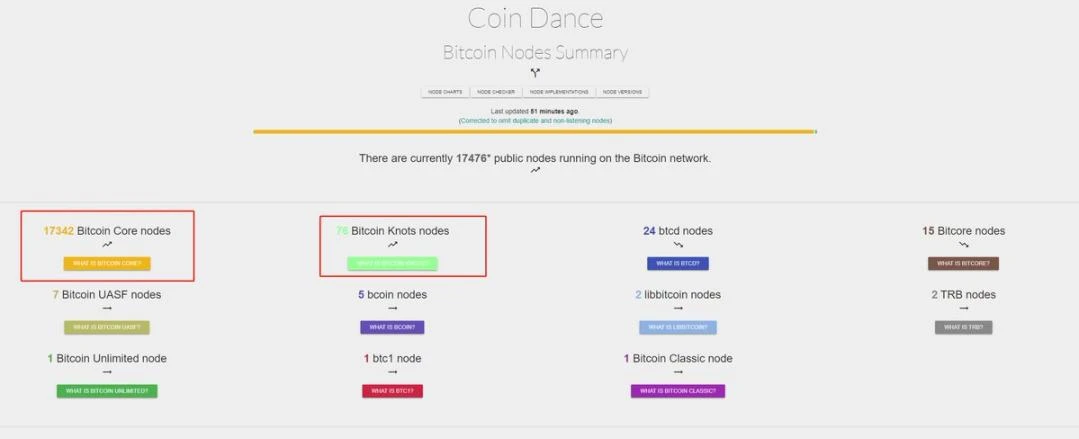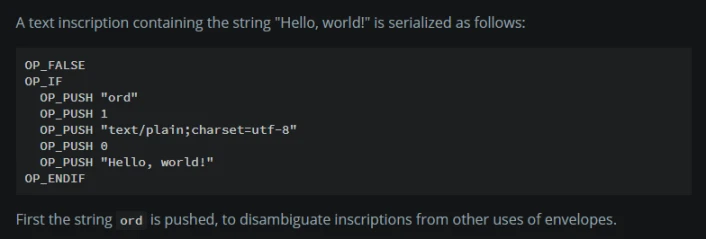Original author: 0xTodd (X: @0x_Todd)
Related Reading:
"Will Bitcoin Core Developers Kill the Inscription? It's Not That Easy for the 'BTC Ecosystem'"
Editor's note: Recently, Bitcoin Core developer Luke Dashjr stated on X platform in a post that "Inscription is exploiting a vulnerability in the Bitcoin Core client to send garbage information to the blockchain. Since 2013, Bitcoin Core has allowed users to set an additional data size limit when forwarding or mining transactions. By obfuscating its data as program code, Inscription bypasses this limit. It is hoped that this vulnerability will be finally fixed before Bitcoin Knots V27 next year. If this bug is fixed, Ordinals Inscription and BRC20 tokens will no longer exist." This news has sparked market discussions.
What other details do we need to know about this Inscription controversy? X KOL 0xTodd (X: @0x_Todd) has compiled 10 key points about the Inscription controversy, as summarized by Odaily Star Daily as follows:
Here are 10 key points to share with you:
1. If the Bitcoin Knots client, as Luke said, refuses to include transactions with $Ordi Inscription after the upgrade, can Inscription still be used?
Answer: If it's Bitcoin Knots client's turn to mine, then Inscription transactions will not be usable (cannot be added to the blockchain).
2. So, is there a high probability that the Bitcoin Knots client will mine blocks?
Answer: Currently, it's relatively low. Currently (December 2023), there are 17,000+ Bitcoin Core clients, while Knots clients are only just over 100 (although it can reach 500 at peak times).

3. Wait, what is a client?
Answer: For a PoW blockchain, there is software that needs to handle the functions of "storing the ledger, mining, and wallets," and this software is the "client."
Because the blockchain is permissionless, theoretically anyone can develop a client as long as it complies with the consensus of the chain. So, there can be various clients, such as Bitcoin Core and Knots.
4. If Bitcoin Core does indeed follow through and decides to prohibit Inscription transactions, will Inscription be completely unusable?
Answer: Not necessarily. Because the Bitcoin Core client needs to be further divided, and many people are using older versions.
Of the 17,000+ Bitcoin Core client users, 9,000 are using versions 24-25, and 5,000 are using versions 21-23. So, even if the 27th version adds a rule to prohibit the abuse of block space, the older versions can still be used.

So, as long as you wait patiently for the older Core versions to mine, this Inscription can still be used. For example, it may take 30 minutes instead of the current 10 minutes to be added to the blockchain.
Of course, there is a tendency for miners to upgrade to the latest version. If everyone gradually upgrades, then the availability of Inscription will become very poor.
5. If Ordi decides to fork the Bitcoin chain, will it be successful?
Answer: Technically, forking is simple; you can just copy the Bitcoin Core code, and you don't even need to make many changes (because the old versions support it), and it can be used.
In terms of consensus, forking is very difficult. What is consensus? You want miners, exchanges, holders, and even the SEC to agree that "the big cake with a small cake inside is the real big cake," which is almost impossible.
6. If I must fork, does forking Bitcoin have any significance?
Answer: It does, but it's very limited.
What Bitcoin prides itself on is the security guaranteed by its powerful computing power. If there is a new chain that is less secure than Bitcoin, it can issue various digital artifacts… wait, why not use an EVM chain?
7. Are Ordi and BRC-20 really exploiting the Bitcoin blockchain using a vulnerability?
Answer: Yes, but the term "exploiting a vulnerability" is a bit exaggerated. In my opinion, it's at most "bypassing restrictions."
After all, subjectively speaking, Ordi is not "exploiting a vulnerability" to such an extent; this term is generally used to describe hackers. But objectively, it has indeed led to the waste of Bitcoin's block space.
8. Really? What is the process of inscription, and how is it bypassed?
Answer: "Inscription" is selecting a certain Satoshi of BTC, i.e., 0.00000001 BTC, and "coloring" it. Then, using Taproot (one of Bitcoin's new technologies), a text script is used to add a note to this 1 Satoshi Bitcoin.
For example, the note could be: the protocol is Ord, the format is UTF-8, and the content is "hello world."

If we must make a comparison, it's roughly equivalent to:
Originally, WeChat red packets were for transferring money. But now, every time I transfer 1 cent to you, we insist on chatting through the note on the red packet.
It's hard to say it's exploiting a vulnerability, but it's probably more like abuse.
Normal Bitcoin does not support creating NFTs, but through this "transfer + note" method, it indirectly achieves it.
At the same time, by using the Taproot technology, it bypasses the original note's limit, allowing it to go from a few bytes to a maximum of 512 bytes.
8.5 Just a side note: Notes and smart contracts are different, you should know.
A smart contract is like signing a contract.
A note is just a note.
Their effects are not the same.
This is also one of the differences between the NFTs in the Ethereum ecosystem and the BRC Inscription.
If I transfer money to you using a smart contract, it's a real transfer that cannot be denied.
If I transfer money to you using a note, for example, Todd's Inscription now belongs to Alex, I just wrote it in the note.
Now, with this Ord protocol, the ruling considers this note valid, and it's considered a successful transfer to you.
9. Inscription is not an NFT, right?
Indeed, it is not. There are differences between the two.
NFTs store a lot of data off-chain, while Inscription exists entirely on the BTC blockchain.
Of course, this is a double-edged sword, and it's precisely the headache for BTC.
The advantage is that it increases miner income, which may become an important source of income after *maybe* N times of halving.
The downside is that it increases the size of the Bitcoin ledger (after all, it has added a lot of extra content in a way that bypasses restrictions), which is not conducive to the storage of full nodes.
The larger the ledger, the fewer full nodes, and the more the blockchain resembles a consortium chain.
9.5 Is the size of the ledger really important?
The size of the ETH ledger has always been large, and in recent years, they have realized this problem and have been discussing how to cut off some historical states and even historical ledgers.
Because Bitcoin uses small blocks, it has been doing relatively well in this regard, and the ledger size is not too large, so there are many full nodes, making it very decentralized.
10. Where should Inscription go from here?
Perhaps actively limiting transaction size would be a good idea, cutting back further on the current basis.
Taproot is a new technology for Bitcoin Core, intended to enable Bitcoin to implement some basic scripting functions.
Ordi can use Taproot to bypass the maximum note limit. But stuffing too much into Bitcoin in a way that bypasses restrictions is not a good idea overall, as it has expanded from a few bytes to several hundred bytes, a difference of over a hundred times.
But if some restrictions are imposed, and a balance is maintained to avoid a "tragedy of the commons," I believe the Bitcoin Core community will not be too averse to such digital artifacts, which may be a better choice.
免责声明:本文章仅代表作者个人观点,不代表本平台的立场和观点。本文章仅供信息分享,不构成对任何人的任何投资建议。用户与作者之间的任何争议,与本平台无关。如网页中刊载的文章或图片涉及侵权,请提供相关的权利证明和身份证明发送邮件到support@aicoin.com,本平台相关工作人员将会进行核查。




